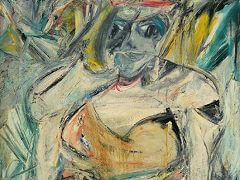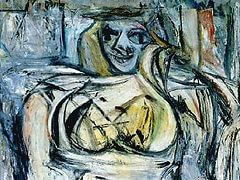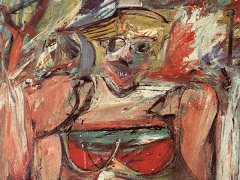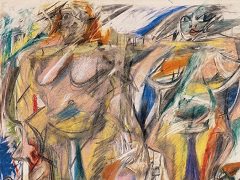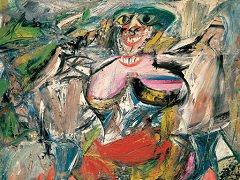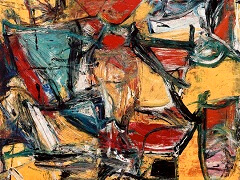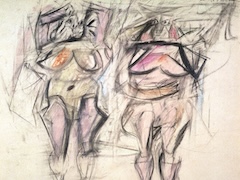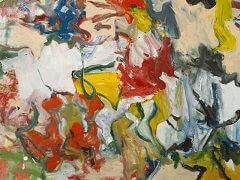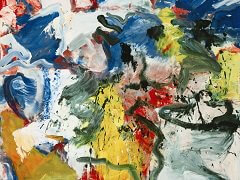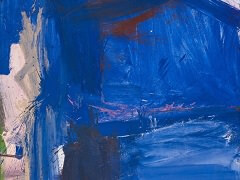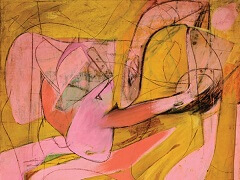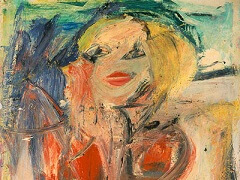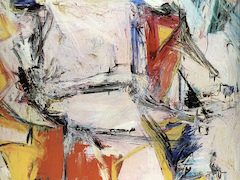Pastorale, 1963 by Willem de Kooning

Pastorale is the last painting de Kooning finished in New York before settling permanently in The Springs on Long Island.
In the early 1960s, Pop Art began to undermine the predominance of Abstract Expressionism. Its representatives, artists such as Roy Lichtenstein, Andy Warhol, Jasper Johns and Robert Rauschenberg, achieved renown and financial success much more rapidly than the generation of de Kooning, Pollock, Kline and Newman. Lichtenstein, for in-stance, showed his work to the dealer Leo Castelli in autumn 1961. By February of the next year he already had his first one-man show with Castelli - and it was sold out even before it opened. The rapid rise of Pop contributed to the impression that Abstract Expressionism was a closed chapter in art history. The artists of this new direction enhanced this development by quoting prominent representatives of the New York School and their painting styles in their work. Around the mid-1960s Lichtenstein painted expressionist brushstrokes in a comic-strip manner - spontaneous, abstract gestures congealed into a mechanical, standardized form, translated into the visual language of a popular mass medium. Sidney Janis, the dealer who in the 195os had helped de Kooning, Pollock, Mark Rothko and Robert Motherwell to their breakthrough, likewise recognized the signs of the time. On 31 October 1962 he opened "The New Realists," an exhibition devoted to a series of Pop artists, and, like Castelli, began to devote himself entirely to promulgating this new direction in art.
During this transitional phase of the New York and international art scene, de Kooning decided to leave the city. In the summer of 1961 he bought a small country house from his brother-in-law, Peter Fried, in The Springs, East Hampton. In 1963, at age fifty-nine, he left New York for good to live on Long Island. During this period, landscape became his foremost concern. Pastorale had still been done in de Kooning's New York studio. With its prevailing pastel pinks and yellows, is often described as his farewell to New York. Its light-saturated colors seem to reflect a city-dweller's idea of sun and ocean, of the vast, wide-open landscape.

